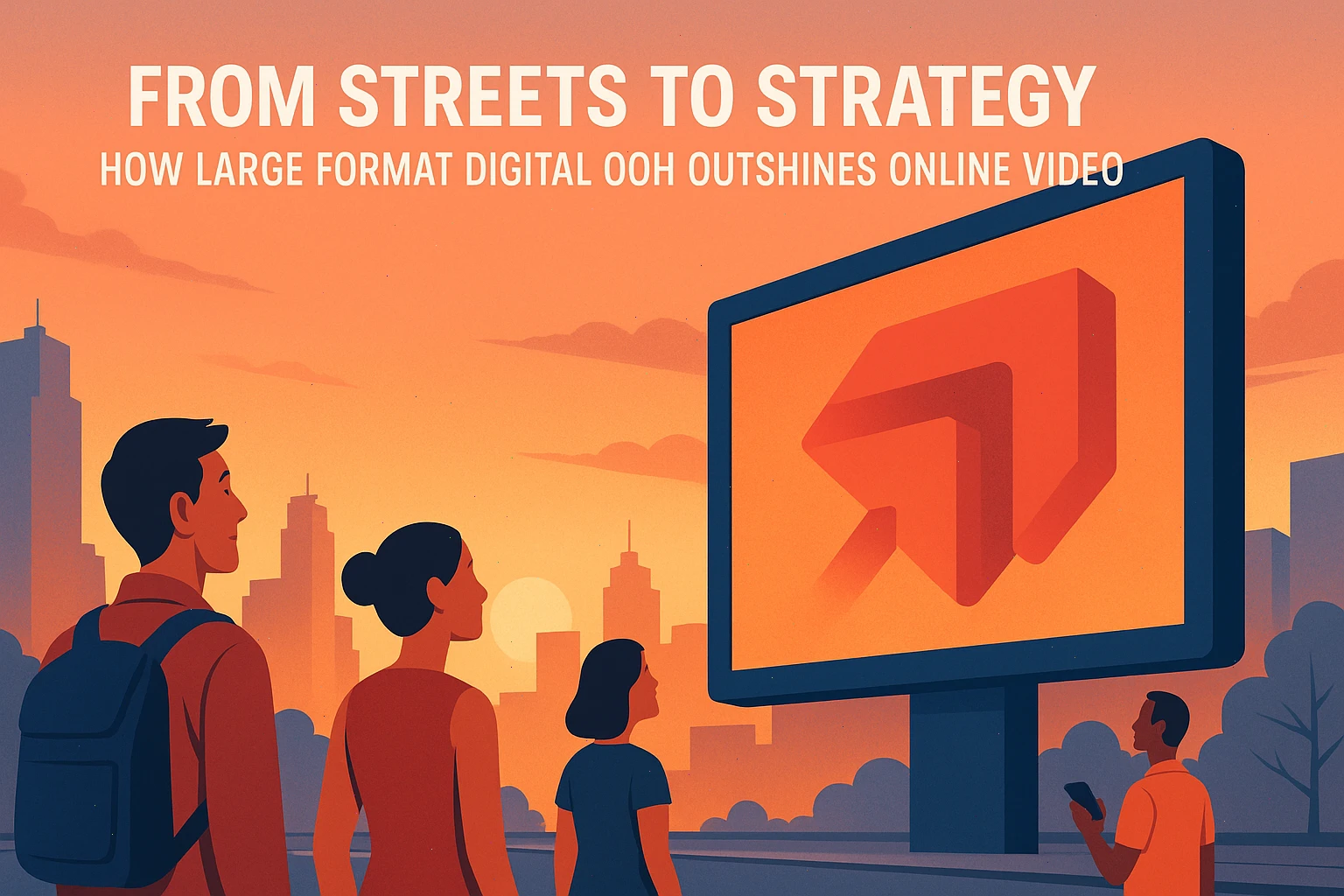For decades, the media industry has relied оn impressions and reach as the primary indicators оf success. These metrics have informed media plans, shaped advertising budgets, and determined the perceived value оf platforms. However, the reality beneath the surface іs increasingly difficult tо ignore: reach іs not attention, and visibility doesn’t guarantee impact.
In a marketplace where consumer focus is fragmented, and the competition for attention has become fierce, advertisers must evolve their approach. The notion that “being seen” is enough no longer holds. Instead, media must engage — meaningfully and memorably. Enter premium large-format Digital Out of Home (DOOH): a channel often overlooked in strategic planning, but now emerging as a force for long-term brand effectiveness.
Our latest research initiative, The Attention Dividend, offers powerful insights that challenge traditional planning assumptions. The findings suggest a necessary recalibration — one in which DOOH is not a peripheral add-on, but a core component of modern media strategies, especially in a video-dominated ecosystem.
Premium DOOH: Not Just Bold, But Effective
Premium large-format DOOH has always turned heads. From iconic billboards in city centers to immersive motion and 3D executions, it delivers visually impactful campaigns in high-footfall, high-visibility public environments. But what’s been underappreciated — until now — is the quality and duration of attention this medium commands.
Contrary to the fleeting engagement typical of digital ads or the skippable, multitasked nature of online video, DOOH captures genuine, focused attention. According to our research, premium DOOH commands over five times more attention than online display advertising, and outperforms social content and online video in dwell time.
These conclusions are not speculative. They are the result of large-scale, empirical eye-tracking studies conducted in real-world simulated journeys. Participants were not just shown DOOH assets; they experienced them as part of a simulated urban journey — giving us authentic insight into how people perceive and respond to media in everyday contexts.
From Attention to Impact: A Strategic Perspective

Attention, however, is just the beginning. What distinguishes this research is how attention metrics were overlaid with commercial outcomes, drawing from previous studies with Ebiquity on the link between media attention and long-term brand profitability.
When this lens is applied, premium DOOH shines not only as a high-attention channel, but as a high-value channel — one that delivers three particularly important benefits:
1. Long-Term Profitability
Media formats that capture more attention drive greater returns over time. DOOH’s superior attention-per-impression metrics position it as an engine for sustained brand value, supporting enduring customer relationships and lifetime value.
2. Mental Availability
In a world where brands must compete to be top-of-mind, DOOH is a secret weapon. Our research reveals that it achieves up to 2.5x higher brand recall than online video, enhancing mental availability — a proven driver of brand choice in competitive moments.
3. Brand Desirability and Consumer Choice
Creative executions on DOOH, especially 3D and motion formats, significantly increase brand appeal. In the study, 3D content resulted in a 32% uplift in brand desirability, while motion formats delivered 2.5x more brand choice impact than static ones.
Together, these outcomes form a compelling case for DOOH not as a decorative flourish, but as a media format capable of driving tangible, strategic value.
The Attention Dividend: Methodology and Measurement
At the heart of this research is a rigorous, controlled eye-tracking study, designed to simulate the way people naturally experience media in the real world.
Study Design
- A nationally representative panel of 2,500 participants took part in a 10-minute study.
- Each participant’s webcam was transformed into a remote eye-tracking device using proprietary software from Lumen.
- Participants watched first-person, pedestrian-style video journeys through urban environments, featuring DOOH sites in situ.
- Their eye movements were tracked in real time, enabling the study team to determine if ads were seen, and for how long.
The central metric derived from this was APM (Attention Per Mille) — which calculates attention per thousand impressions. APM merges viewing incidence (how many people look) with dwell time (how long they look) into a single, comparable value that reflects the quality of attention, not just its quantity.
Brand Impact Survey
Immediately after the attention-tracking phase, participants completed a detailed brand impact survey, which included:
- Unaided and aided brand recall
- Brand choice (intent to select one brand over another)
- Brand desire (emotional favorability and likability)
By pairing attention data with brand lift data, the study provides a holistic model for media effectiveness, enabling advertisers to assess how well each media format converts visibility into actual consumer behavior and commercial outcomes.
A Strategic Reframing of DOOH’s Role
The findings of The Attention Dividend demand a rethinking of DOOH’s place in the media mix. Rather than being relegated to late-stage creative extensions or local awareness plays, premium DOOH should be elevated to a primary position in media strategies — right alongside TV, social video, and programmatic display.
This does not mean abandoning digital or video platforms. Instead, it suggests a rebalancing. For example:
- Combine premium DOOH with standard OOH to scale reach without sacrificing attention quality.
- Integrate premium DOOH video into cross-platform video strategies, enhancing the overall campaign with a brand-safe, high-attention environment that boosts effectiveness.
In short, DOOH should no longer be seen as a tactical bolt-on — it is a strategic contributor to brand equity and profitability.
Conclusion: In a Finite Attention Economy, DOOH Offers Infinite Possibility
In an age where audience attention is scarce, fractured, and often distracted, advertisers face a stark choice: continue investing in formats that offer quantity without quality, or prioritize those that deliver real, sustained, and valuable attention.
Premium large-format DOOH provides a rare opportunity — a format that is not only highly visible but deeply engaging; not only public, but profoundly personal in its ability to influence perception, memory, and decision-making.
The next frontier in media planning will not be defined by reach alone, but by the depth of attention and the durability of impact. With the data now in hand, the imperative is clear: planners and advertisers must shift their gaze from the screen in the pocket to the screen on the street — and from fleeting impressions to strategic influence.





